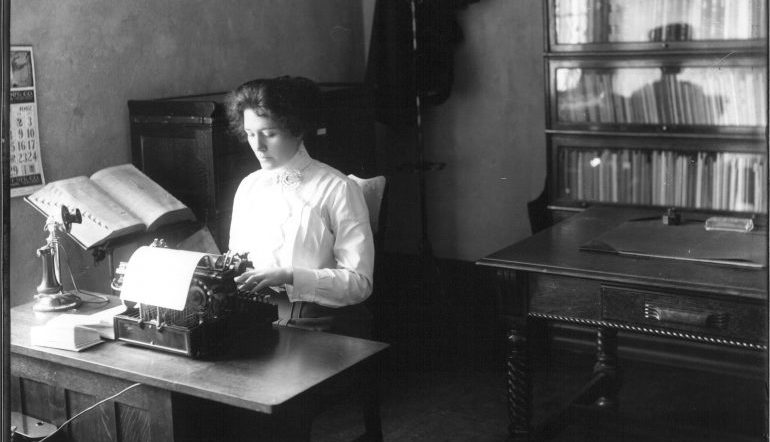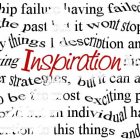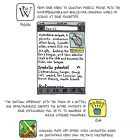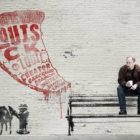What’s Done is Done is Done Again
 As a creative writing instructor, I get asked two questions more than any others. The first is easy enough to answer: “How do I find time to write?” There’s no secret here—set a schedule and get to your desk. The second question, however, continues to stump me, both as a writer and as a teacher. “How do I know when I’m finished?” This question seems as open as it is insoluble, and yet we writers need to tackle it if we’re ever to move past our first attempts.
As a creative writing instructor, I get asked two questions more than any others. The first is easy enough to answer: “How do I find time to write?” There’s no secret here—set a schedule and get to your desk. The second question, however, continues to stump me, both as a writer and as a teacher. “How do I know when I’m finished?” This question seems as open as it is insoluble, and yet we writers need to tackle it if we’re ever to move past our first attempts.
During my stint teaching academic writing at a university, my undergrad students never asked me how to know whether their essays were complete. The answer was quite simple—they’d work until the deadline, hand it in, and that was it. My students worked hard, and they cared about the success of their arguments and the grades they received. They just didn’t have the luxury of worrying whether or not their papers were complete.
Still, they learned the necessity of revision and how to diagnose the effectiveness of their arguments. To help them do so, I devised a list of five aphorisms to consider before turning in their work. The list aimed to help identify lazy thinking, which inevitably leads to lazy writing. We memorized them as a group and used them as we provided feedback for rough drafts throughout the semester. I’ve found these truisms equally helpful for my own creative work, and I hope they’ll do the same for you.
1. Don’t simplify the complex.
Real life has no saints or sinners, only humans who are capable of selfless and selfish acts. If you’re looking for a model here, you’ll find no better than Aryn Kyle’s novel The God of Animals. The characters Kyle portrays are surprising and complicated—their actions are convincing, but not easily understood, and that’s what makes a story haunt us long after we finish it. Where have you sold a character short in your work? Where have you substituted cliché when a more complex dynamic is needed? The best stories don’t hit a single note; they chime resonant chords. Don’t settle for a narrative that illustrates violence. Revisit it until that violence is laced with regret, love, or fear. Work until your capacity for complexity surprises you.
2. Your most convincing narrative is found in the specific.
In an interview with The Paris Review, Jeffrey Eugenides had this to say about specificity: “I never write about ‘women.’ I write about one woman, or one man, or one intersex person. Fiction should be specific rather than general, because people are specific.” This quote addresses why I banned certain words from my university classroom, such as “society,” “different,” and “dysfunctional.” These words blur rather than specify, and by attempting to be universal, they fail to snag a reader’s interest.
Often, our early drafts ignore the essential details of context. Let’s say we wanted to write a story about a Machiavellian rise to power. Set it in England in the late 1500s, and you have Shakespeare’s “Richard III.” Center it on the girlish cunning of a high school cheerleading squad, and you have Megan Abbott’s Dare Me. Even if a writer chooses not to reveal the larger world that encompasses his story, he needs to see it clearly. If he doesn’t, what might have been cast as a compelling ambiguity ends up looking like an oversight instead.
3. Check your assumptions.
Assumptions work in two ways in our drafts: what we assume on behalf of our readers, and what we assume on behalf of our characters. Regarding our audience: Always assume that your reader is intelligent; never assume she can find clues you haven’t left. And regarding our characters—unfortunately, our biases have a nasty way of working themselves into our narratives. This seems to occur especially when we cross the gender line, and an easy way to address this is to find a trusted reader of the opposite sex. And lastly, don’t assume every housewife is unhappy, every bachelor is promiscuous, or every old person is laden with nostalgia. If you find yourself stuck here, please see #1.
4. Order the text in a way that deepens its meaning.
When my undergrads worked to formulate their arguments, we talked a lot about the importance of cause and effect. An argument—or a story—that’s still in formation looks like this: X and Y and Z. The end. A well-formulated argument or narrative looks more like this: Because of X, Y occurred, and Z was the fallout. Of course that’s not a perfect strategy for every story, but the key is the same: Delve deeper. Don’t flit across the surface. Take us down the rabbit hole.
5. Don’t answer the question; address the problem.
The best essays, stories, and books don’t instruct as much as they offer an invitation to be instructed alongside the author. I think the best example of this technique is illustrated in Raymond Carver’s classic short story “What We Talk About When We Talk About Love.” He never answers the question the title puts forth; instead, the text illuminates the tensions that arise when love gets mistaken for—or mixed with—other emotions. It’s mysterious without being coy, insightful without being didactic. Just another reason why Carver is a master.
I hope these tips help you transform how you conceptualize your work from “this is me” to “this is mine.” May our drafts never become so precious to us that we can’t improve them, finish them, and then begin anew.



